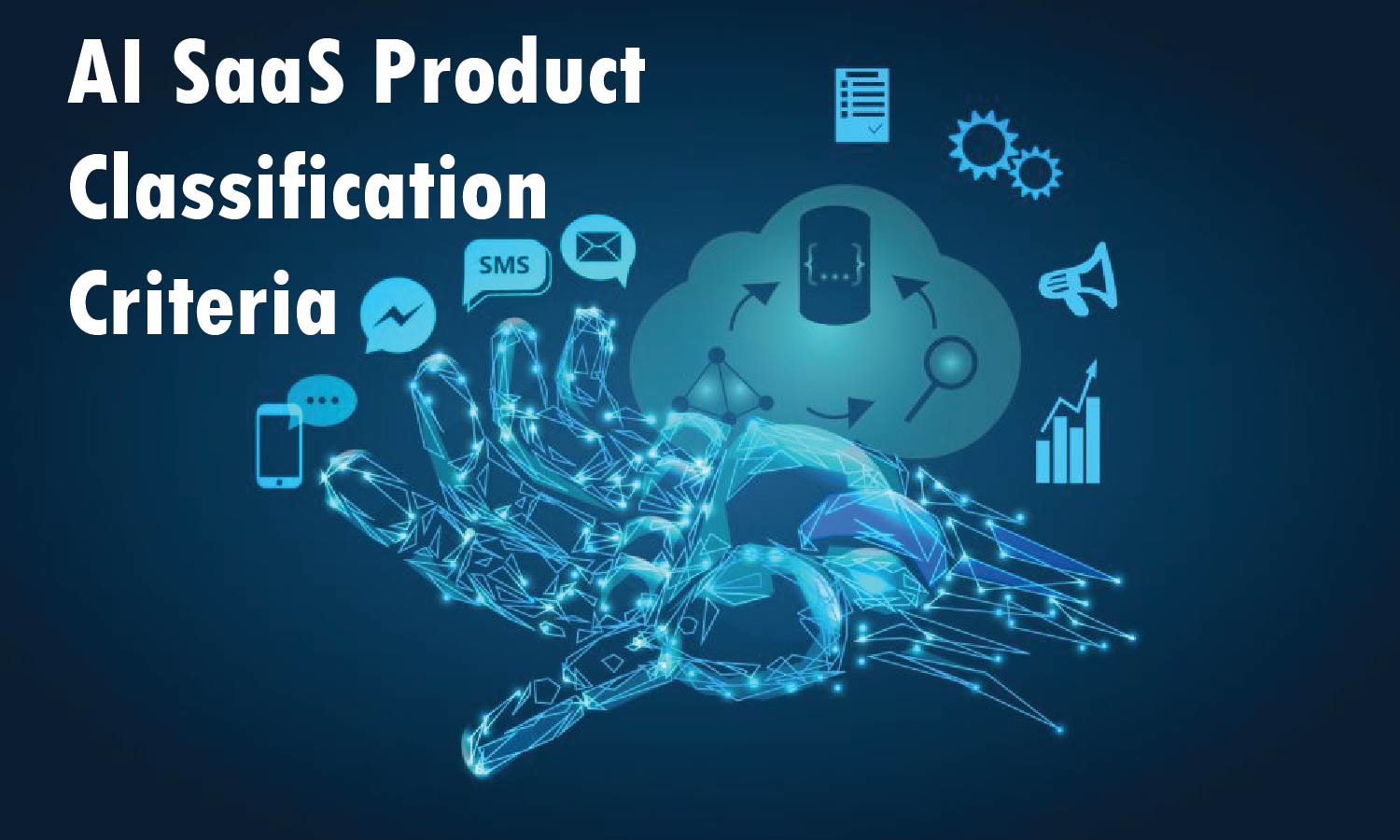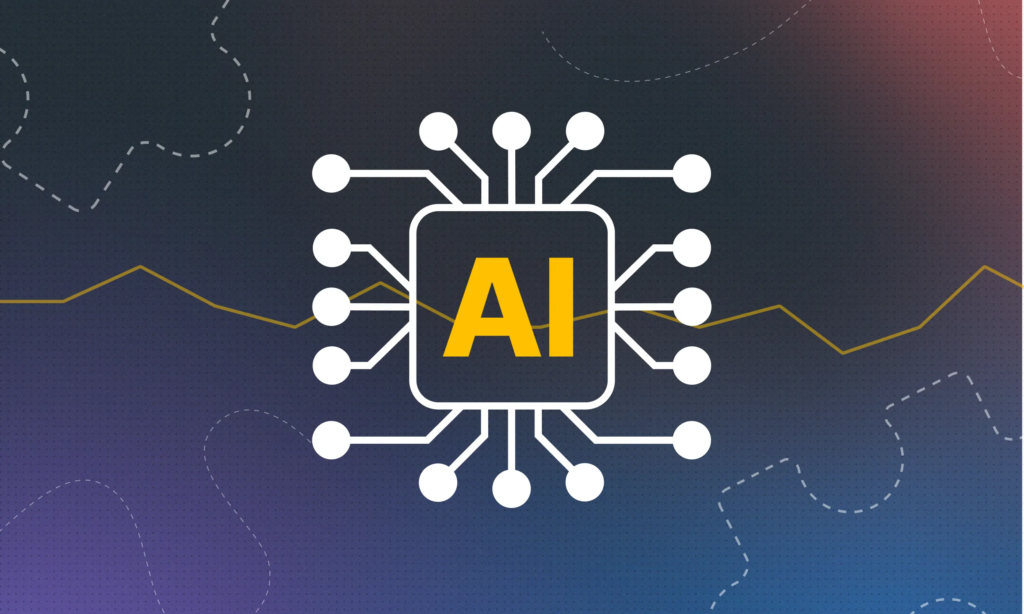Tech
AI SaaS Product Classification Criteria: Your Guide to Smarter Business Solutions

- Share
- Tweet /home/u433845138/domains/newsmm.co.uk/public_html/wp-content/plugins/mvp-social-buttons/mvp-social-buttons.php on line 71
https://newsmm.co.uk/wp-content/uploads/2025/07/dfgsdfy-01-01-1000x600.jpg&description=AI SaaS Product Classification Criteria: Your Guide to Smarter Business Solutions', 'pinterestShare', 'width=750,height=350'); return false;" title="Pin This Post">
The world of business is constantly evolving, and at its heart, a powerful force is reshaping how we operate: Artificial Intelligence (AI) delivered as Software as a Service (SaaS). These innovative solutions are no longer just a futuristic concept; they are becoming essential tools for companies of all sizes, offering remarkable opportunities for efficiency, growth, and enhanced customer experiences.
But with a seemingly endless array of AI SaaS products emerging, how do you make sense of it all? How do you choose the right tools that truly align with your specific business needs? The key lies in understanding the various classification criteria that help us categorize and evaluate these sophisticated solutions. This guide will walk you through these essential criteria, empowering you to navigate the AI SaaS landscape with confidence.
Understanding the Building Blocks: Underlying AI Technology
At the core of every AI SaaS product is a specific type of artificial intelligence. Recognizing these fundamental technologies is the first step in understanding what a product is truly designed to do.
Machine Learning (ML) & Predictive Analytics
Think of these as the crystal ball for your business. ML algorithms analyze vast amounts of historical data, identifying intricate patterns and relationships that human eyes might miss. This allows AI SaaS products leveraging ML to make surprisingly accurate predictions about future events.
- Predicting Future Trends: Imagine knowing which customers are likely to leave next month, or what your sales figures will look like in the next quarter. Predictive analytics, powered by ML, makes this possible. This can revolutionize areas like churn prediction, revenue forecasting, and lead scoring, allowing businesses to proactively address potential issues or seize emerging opportunities.
- Optimizing Performance: ML can also optimize various business processes. Dynamic pricing models, for instance, adjust prices in real-time based on demand, inventory, and competitor pricing, maximizing revenue. Similarly, ML can optimize resource allocation, ensuring your teams and assets are used most effectively.
- Continuous Improvement: A remarkable aspect of ML is its ability to learn and improve over time. As these systems are fed more data and observe outcomes, their predictions become more accurate and their insights more refined. This means your AI-powered SaaS tools get smarter the more you use them, providing an ever-increasing return on investment.
Natural Language Processing (NLP) & Conversational AI

These technologies are all about understanding and interacting with human language, whether written or spoken. They bridge the gap between complex data and human communication, making interactions more natural and efficient.
- Chatbots and Virtual Assistants: Perhaps the most visible application, conversational AI powers intelligent chatbots and virtual assistants that can handle customer inquiries, provide instant support, and even guide users through complex tasks. This significantly improves customer service by offering immediate assistance and reducing the burden on human agents.
- Semantic Search and Content Analysis: NLP allows systems to understand the meaning and context of text, enabling more relevant search results within vast document repositories. It also facilitates sentiment analysis, helping businesses gauge customer feelings about their products or services from reviews and social media mentions.
- Automated Summarization and Generation: Imagine automatically summarizing lengthy reports or generating customized email responses. NLP-powered tools can do exactly that, freeing up valuable time for employees and ensuring consistent communication.
Generative AI (Large Language Models & Vision Models)
Generative AI is the creative powerhouse of the AI world. It’s about creating entirely new content – be it text, code, images, or even designs – by learning from massive datasets.
- Automated Content Creation: From marketing copy and blog posts to personalized email templates and product descriptions, generative AI can produce high-quality written content at scale. This can drastically reduce the time and effort spent on content creation, allowing marketing and sales teams to focus on strategy and engagement.
- Code Generation and Development Assistance: Developers are increasingly using generative AI to assist with coding, suggest solutions, and even generate entire code snippets. This can accelerate development cycles and improve code quality.
- Visual Content Creation: Generative vision models can create stunning images, graphics, and even product designs from simple text prompts. This opens up new possibilities for marketing, design, and product visualization.
Computer Vision
Computer vision equips AI SaaS products with the ability to “see” and interpret visual information from images and videos.
- Object Detection and Recognition: This is crucial for tasks like inventory management, security surveillance, and quality control in manufacturing. Systems can automatically identify and track specific objects, ensuring accuracy and detecting anomalies.
- Facial Recognition: Used for security, access control, and even personalized customer experiences in retail, facial recognition technology is becoming increasingly sophisticated.
- Augmented Reality (AR) Applications: Computer vision powers many AR features, such as virtual product try-ons in e-commerce or interactive guides in industrial settings.
Deep Learning
Often considered a specialized subset of machine learning, deep learning uses neural networks with many layers to learn highly complex patterns. It’s particularly effective for tasks requiring a deep understanding of data, such as advanced image recognition, complex natural language understanding, and highly accurate forecasting in dynamic environments. Many of the generative AI models mentioned above rely heavily on deep learning.
Beyond the Tech: Application and Use Case
While understanding the core AI technology is crucial, the true value of an AI SaaS product often lies in its specific application within a business context. Products can be categorized by the problems they solve and the departments they serve.
- Marketing & Sales: This category includes tools for hyper-personalization, customer segmentation, lead generation and scoring, predictive analytics for sales opportunities, and automated content creation for campaigns.
- Customer Service: Think chatbots, intelligent FAQs, automated support ticket routing, and sentiment analysis tools that help customer service teams understand and respond to customer emotions.
- Operations & Efficiency: These solutions focus on streamlining internal processes, such as intelligent automation (often integrating with Robotic Process Automation – RPA), predictive maintenance for machinery, supply chain optimization, and real-time analytics for operational insights.
- Security & Compliance: AI-driven threat detection, fraud prevention systems, automated cybersecurity monitoring, and tools for ensuring compliance with industry regulations fall into this critical category.
- Product Development: AI-assisted development tools, no-code/low-code platforms enhanced with AI, and user behavior analysis for recommending new features or improvements.
- Data Management: Solutions that automate data cleaning, deduplication, product categorization, and data enrichment, ensuring high-quality data for all other AI applications.
The Bottom Line: Business Impact and Value Proposition
Ultimately, businesses invest in AI SaaS to achieve tangible benefits. Classifying products by their core value proposition helps to cut through the technical jargon and focus on what truly matters.
- Cost Reduction: Automating repetitive tasks, optimizing resource allocation, and minimizing errors can significantly lower operational costs.
- Increased Efficiency & Productivity: Streamlining workflows, accelerating decision-making, and freeing up employees from mundane tasks leads to higher overall productivity.
- Enhanced Customer Experience: Personalization, faster and more consistent support, and improved product discovery lead to happier and more loyal customers.
- Improved Decision-Making: Data-driven insights, accurate predictions, and real-time analytics empower businesses to make smarter, more informed decisions.
- Risk Mitigation: Early detection of potential issues, enhanced cybersecurity, and proactive fraud prevention minimize business risks.
- Scalability: The ability of the solution to handle increasing data volumes and growing user demands without significant additional investment.
Practicalities: Integration and Technical Considerations

Even the most brilliant AI solution is only as good as its ability to fit into your existing ecosystem and operate reliably.
- Integration Capabilities: A key consideration is how easily the AI SaaS product integrates with your current business systems, such as CRM, ERP, or marketing automation platforms. Robust APIs and pre-built connectors are vital for seamless data flow.
- Data Handling and Infrastructure: AI thrives on data. An effective AI SaaS product must be capable of efficiently processing large and diverse data volumes, whether structured or unstructured. Understanding its reliance on specific cloud providers (AWS, Azure, Google Cloud) and its ability to scale with your data growth is crucial.
- Adaptability and Evolution: The AI landscape is rapidly changing. A desirable AI SaaS solution should be designed to evolve, incorporating new features and adapting to changing data patterns and business requirements.
- Accuracy and Reliability: This is paramount. The AI’s outputs must be consistently accurate and reliable for businesses to trust and act upon its insights. This often involves understanding the model’s performance metrics and the provider’s commitment to continuous improvement.
- Ethical Considerations and Bias: As AI becomes more pervasive, ethical considerations are gaining prominence. It’s important to assess if the AI models are fair, unbiased, and comply with data privacy regulations (like GDPR). Transparency in how the AI makes decisions can also be a significant factor, especially in sensitive applications.
The Price Tag: Pricing and Packaging Models
Understanding the various pricing models is essential for budgeting and evaluating the long-term cost-effectiveness of an AI SaaS product.
- Usage-Based Pricing: Many AI SaaS products charge based on consumption – perhaps the number of API calls, data processed, or specific AI model usage. This can be cost-effective for variable workloads.
- Feature-Based Pricing: Different tiers might offer access to a basic set of AI features versus more advanced, premium functionalities.
- Per-Seat/User-Based Pricing: Similar to traditional SaaS, some AI products charge per user, which is common for collaborative tools.
- Hybrid Models: Often, providers will combine these approaches, offering a base subscription with additional charges for high usage or premium features.
- Value-Based Pricing: Increasingly, some AI SaaS providers are aligning their pricing with the direct business value or ROI delivered, though this can be harder to quantify.
By carefully considering these comprehensive classification criteria, businesses can move beyond the buzzwords and truly understand the capabilities and potential of AI SaaS products. This systematic approach allows for informed decision-making, ensuring that the chosen solutions are not just technologically advanced but also strategically aligned with organizational goals and poised to deliver real, measurable value.
Frequently Asked Questions (FAQs) About AI SaaS Product Classification
1. What is AI SaaS, in simple terms? AI SaaS (Artificial Intelligence Software as a Service) is software delivered over the internet, incorporating AI capabilities like machine learning or natural language processing, often on a subscription basis. It means you get powerful AI tools without needing to build or maintain them yourself.
2. Why is it important to classify AI SaaS products? Classifying AI SaaS products helps businesses understand their core functionality, identify how they can solve specific problems, compare different solutions effectively, and make informed purchasing decisions that align with their strategic goals.
3. What are the main types of AI technologies found in SaaS products? The main types include Machine Learning (ML) and Predictive Analytics, Natural Language Processing (NLP) and Conversational AI, Generative AI (like Large Language Models for text and code, or Vision Models for images), Computer Vision, and Deep Learning.
4. How does a company’s “use case” influence AI SaaS classification? A product’s use case dictates which business problem it aims to solve. For example, an AI SaaS product might be classified under “Customer Service” if its primary function is to automate customer inquiries, even if it uses NLP as its underlying technology.
5. What kind of business impact should I look for when classifying AI SaaS? Look for impacts like cost reduction, increased efficiency, enhanced customer experience, improved decision-making, reduced business risk, and the ability to scale operations more effectively.
6. What are the key technical considerations for AI SaaS solutions? Important technical considerations include how easily the product integrates with existing systems, its ability to handle large data volumes, its adaptability to future needs, its accuracy and reliability, and its adherence to data privacy and security standards.
7. How do AI SaaS pricing models typically work? Pricing models vary, but common approaches include usage-based (paying for what you use), feature-based (different pricing tiers for different functionalities), per-seat/user-based (paying per person), and hybrid models that combine these approaches. Some may also consider value-based pricing.
8. Is AI SaaS only for large enterprises? No, AI SaaS is designed to be accessible to businesses of all sizes. The cloud-based nature and subscription models make advanced AI capabilities available without requiring significant upfront investment in infrastructure or specialized AI teams.
9. What are the ethical considerations when adopting AI SaaS? Ethical considerations include ensuring the AI models are unbiased, transparent in their decision-making where necessary, and that they comply with all relevant data privacy regulations to protect sensitive information.
10. How can I ensure an AI SaaS product is reliable and accurate? To ensure reliability and accuracy, look for providers with proven track records, request case studies and customer testimonials, inquire about their model training processes, and consider starting with a trial or proof-of-concept to test the product in your specific environment.
Click for more amazing info. News MM

-

 Celebrity8 months ago
Celebrity8 months agoIndia Rose Brittenham: All You Need to Know About Heather Thomas’ Daughter
-

 Celebrity8 months ago
Celebrity8 months agoMargot Rooker: All You Need to Know About Michael Rooker’s Wife
-

 Celebrity8 months ago
Celebrity8 months agoNadia Farmiga? All You Need to Know About Taissa Farmiga’s Sister
-

 Celebrity8 months ago
Celebrity8 months agoRobert Noah? All You Need to Know About Trevor Noah’s Father
-

 Celebrity7 months ago
Celebrity7 months agoJackie Witte? All You Need to Know About Paul Newman’s First Wife
-

 Celebrity8 months ago
Celebrity8 months agoCheryl Pistono? All You Need to Know About Kareem Abdul-Jabbar’s Ex-Girlfriend
-

 Celebrity8 months ago
Celebrity8 months agoAbigail S. Koppel? All You Need to Know About Leslie Wexner’s Wife
-

 Celebrity7 months ago
Celebrity7 months agoWho is the Father of Jay-Z? Biography of Adnis Reeves












